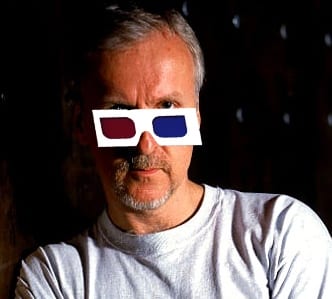
Found, thanks to the Variety magazine, this very recent note made to the film director James Cameron, not only because of his success and talent in the field in which he works, but also because of the soon release of his new film, «Avatar«. A really interesting interview, where Cameron explains, not only about the film, but also pronouncing himself in relation to cinema as art, and as a means of which he has appropriated years ago. I hope you enjoy it.
variety: You have worked in 3-D before and have been a true promoter of this technique. Many people in the industry comment on the importance of showing an experience in theaters that goes beyond what people can get at home. We are also observing that the public likes 3-D format and that this technique is becoming a fundamental driver for the adoption of digital format systems in movie theaters. But speaking specifically of your work as a director and screenwriter, what does the 3-D format add to the creative aspect of a film project?
James Cameron: I think Godard knew it perfectly well. Cinema is not a truth 24 times a second; it's a lie 24 times a second. The actors pretend to be people who are not, in completely illusory situations and environments: one day simulates the night, an arid landscape pretends to be humid, the city of Vancouver happens to be New York, potato chips pretend to be snowflakes. The building is simply a thin-walled set, sunlight is Xenon lighting equipment, and traffic noise is provided by sound specialists. Everything is an illusion, but the prize goes to those who make the fantasy more real, more visceral and more recognizable by the public.
This sense of reality is greatly enhanced by stereoscopic illusion. To date, in the types of films that have been primarily my specialty, fantasy is best appreciated through a detail and texture-based sense of reality that favors the story at all times. The entire set of characters, dialogue, production design, photography and special effects should be geared towards producing the illusion that what you are seeing is really happening, no matter how unlikely the situation might be if you stopped to think about it - for example A cyborg traveling out of his time who kills a waitress can change history.
When one sees a sequence in 3-D, that sense of reality is amplified. The visual cortex concludes, on a subliminal but pervasive level, that what it is seeing is real. All the films I have done before could have absolutely benefited from the 3-D format, therefore, creatively, I consider the 3-D technique a natural extension of my craft as a filmmaker.
A 3-D movie immerses you in the scene with a greater sense of physical presence and involvement. I think an MRI of brain activity would show that there is more neural activity when watching the movie in 3-D format than when viewing it in 2-D. Most people when they think of 3-D movies mostly imagine sequences with strange contraptions: characters or objects that fly, float or are projected towards the public.
Actually, in a good stereo movie these shots should be the exception rather than the rule. To watch a movie in stereo is to observe an alternate reality through a window. The suitability of this immersive quality in action, fantasy and animation films is somewhat intuitive to the film industry. What is less obvious is that increasing this sense of presence and realism works in all kinds of scenes, even the most dramatic and intimate moments. This does not mean that all films should be made in 3-D, because in many cases the result may not justify the costs, but of course, there should be no creative reason why a film could not be shot in 3-D. -D and benefit from it.
When I started the 2000-D camera development process with Vince Pace in 3, we were looking for an alternative to the conventional cameras that I had used up to then. Two years later, while delving into the development and production of stereo technology, I had a vision: that the digital projectors proposed to replace 35mm film could perfectly support the 3-D format due to their high frame rate. . They might actually be able to project 3-D into the left eye and right eye sequentially, at truly high frame rates that we would perceive as simultaneous. I then concluded that this meant that a new era of the 3-D format was now fully feasible, and that our modest efforts in this technology would lead the market to broadly support the development of digital cinema, which was seen as imminent and inevitable.
It's ironic that half a decade later the development is taking place, largely because it is being driven by 3-D. Digital cinema is bringing the 3-D format to the market. And this is because the public is seeing something they like and is showing their willingness to pay more for it. The new 3-D, this renaissance of stereo, not only solves all the old problems of poor projection, eye strain, etc., but is being used in top-notch movies, which are the ones that viewers want to see. This represents a fundamental change from what happened in the 50s with the short-lived 3-D craze. The 3-D format is also an opportunity to rewrite the rules, raise ticket prices for a tangible reason: for demonstrable added value.
A quick definition of the terms: I say stereo instead of 3-D because I deal with many digital animation artists who are used to using the term “3-D” as a characteristic term of digital animation art, therefore, I usually use stereo instead, a shortened form of stereoscopic, so there is no confusion. However, when it comes to the audience, I say 3-D because viewers know what it means in that context: that they are going to have to wear glasses and that they are going to see something really innovative.